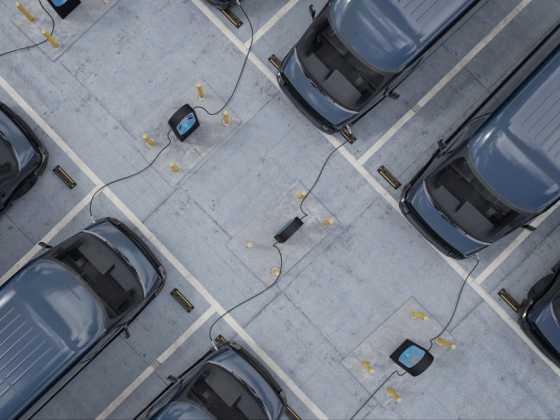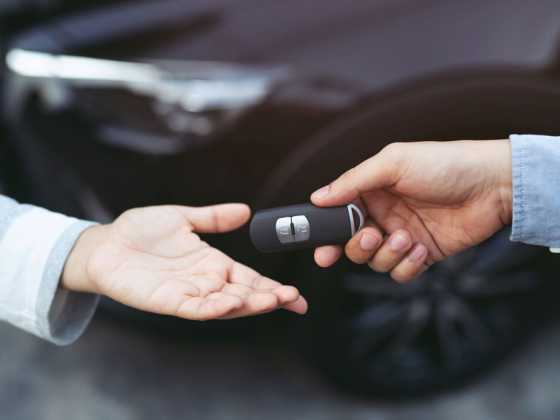The lowdown on EV Batteries
Jim Hooper, from Millbrook Proving Ground looks at the limitations of current EV battery packs and improvements that could be made in the future
 Over the past decade the focus on developing Electric Vehicles (EVs), all of which have some form of on‑board high voltage electrical energy storage system, has increased significantly, due to the demand for passenger vehicles with increased fuel economy and reduced emissions. This demand is being driven by an increased customer awareness of ‘green’ issues, the rising cost of traditional liquid fuels and government legislation.
Over the past decade the focus on developing Electric Vehicles (EVs), all of which have some form of on‑board high voltage electrical energy storage system, has increased significantly, due to the demand for passenger vehicles with increased fuel economy and reduced emissions. This demand is being driven by an increased customer awareness of ‘green’ issues, the rising cost of traditional liquid fuels and government legislation.
There are however limitations of current EV batteries, namely the weight and size of battery packs. To achieve performance and range characteristics that are acceptable to customer’s expectations, and due to the current battery chemistries available to Engineers, EV battery packs are typically constructed from hundreds of Lithium-ion battery cells similar to the type that are found in many consumer electronics such as laptop computers.
Each one of these single cells within the pack has to be linked together with copper links known as “buzz bars” and is subsequently packaged within a heavy duty casing with an integrated thermal management system to ensure the multiple cells of the pack are maintained within a desired operating temperature. As a result current Lithium-ion packs installed in both BEVs and HEVs are very heavy (typically in excess of 350Kg for BEVs) and can contribute to more than one third of the vehicle’s overall weight. The resulting external dimensions of the pack are also significant (typically 1.5m long by 1m wide and 0.5m tall).
Range and Charge Time
Two major disadvantages of EVs are the time required to recharge the
battery pack and the subsequent range.
Latest advances in Lithium-ion battery technology have resulted in fully‑charged BEVs being capable of travelling distances of 100 to 160 miles per charge; however due to the behaviour of current battery chemistries, such as Lithium-ion, EV battery packs require a six to eight-hour charge to achieve a full state of charge. Importantly, many battery electric vehicle packs can achieve a 60 to 80 per cent state of charge within one to two hours.
Integration
It is currently very expensive for OEMs to integrate EV batteries into a vehicle platform due to the size of the pack, necessary pack protection required for crashworthiness legislation and associated power electronic and thermal management infrastructure. Also, due to the lack of historical data with regard to the long term effects of in-service operation on battery packs and the subsequent interaction of other vehicle subsystems on the battery assembly, there is a low understanding of the requirements and design actions that are necessary to optimise the packs life and function in service.
Vibration and shock testing
A review of academic research suggests that some test standards and legislative requirements defined for the vibration and shock testing of EV battery packs have been derived of data from consumer electronics or transposed from data from more traditional internal combustion engine vehicles. As a result there is every possibility that EV battery packs are being either over or under-engineered. They could be over engineered to compensate for vibration inputs that they would otherwise never be subjected to, thus increasing weight and cost. Or they could be under-engineered because the battery component is not subjected to the correct in-market vibration and shock loads, therefore potentially increasing the risk of safety related failure.
Testing, testing
In order to improve our understanding of vibration requirements in EV batteries, Millbrook has carried out a number of tests on a range of EV batteries, by subjecting them to ‘real world’ road surfaces and rough road abuse environments. This was conducted through the instrumentation and measurement of the vibration behaviour of high voltage battery packs installed to a selection of current production Hybrid Electric Vehicles (HEV) and Battery Electric Vehicles (BEV) when driven over the repeatable surfaces at Millbrook.
The data was collected from tri-axial accelerometers at six locations of the vehicle, including both A Pillars, from the front and rear of the battery packs and from the front and rear of the chassis’. These components were assessed over surfaces from Millbrook’s Structural Durability Procedure, which simulates 10 years of durability for a typical European passenger car. To ensure consistency across the full range of tests, all surfaces were recorded at the same speed, using the same driver and carrying the same passenger.
The results
Initial tests carried out in the study revealed some interesting results that differ considerably from what we currently know about vibration in electric vehicle batteries. For example, we identified that the bulk of vibration energy in EV battery packs occurs from 0 to 100Hz, it was previously thought to occur between 0 to 50Hz. It was also noted that current engineering specifications for battery vibration durability typically test from 7Hz upwards, however Millbrook’s study has highlighted the need to consider frequencies below 7Hz, as significant vibration energy occurred from 0 to 5Hz in all battery electric vehicles tested.
RESS vibration testing
An academic review and evaluation of current rechargeable energy storage system (RESS) vibration test procedures highlighted that typically the X and Y axis of EV battery packs are evaluated using the same test profile, however the X and Y vibration behaviour of the EV battery packs evaluated in our research differed significantly. Therefore Millbrook would recommend that the X and Y axis of an EV pack be evaluated using specific vibration data, based on vibration measurements that it will receive in the in-vehicle conditions.
Powertrain induced vibration testing
A mode typical of powertrain induced vibration was noted in all EVs between 7 to 20Hz. High energy spikes were also noted in some EVs above 300Hz, this is likely to be caused by powertrain induced vibration from the electric motor or transmission assemblies or the effect of vibration induced by different cooling strategies or power electronics.
Further research is required to identify the exact cause of these vibration energy spikes above 300Hz. This study also highlighted that if it was determined in future that vibration was being introduced to the pack through cooling strategies, the pack’s vibration life has the potential to be affected by different climates and driving styles.
There is evidence to suggest that due to the balanced weight distribution of EVs, lower vibration energy levels are typically witnessed within these vehicles than their internal combustion vehicle (ICV) counterparts.
Body torsion testing
Evidence was also found to suggest that vibration behaviour at 20 to 40Hz in EV battery packs are the result of a body torsion mode, due to the pack forming a large structural member of the chassis. This could be validated by further investigation of the pack and chassis vibration response via a modal analysis in a laboratory. However, some resonances between 20 to 40Hz were attributed to the vibration isolation strategies employed by manufacturers to isolate the pack from chassis vibration, therefore it is recommended that engineers consider the battery pack to chassis integration as the packs installation can affect the frequencies and vibration energy it will see during its service life.
Durability testing
Test standards J2380 and BS62660 have been compared to data recorded from current EV passenger vehicles currently on sale in the UK market. The recorded vibration data was sequenced to a known durability test schedule that correlated to represent 10 years durability and 100,000 miles of representative rough road surfaces. Both methods of data sequencing resulted in the conclusion that both test standards are too severe when used to determine the durability of a RESS of a European passenger vehicle.
An investigation into the effect of different weightings of road classifications was undertaken as part of Millbrook’s study and it has concluded that BEVs, designed for an urban and rural environment will be subjected to greater vibration energy from 0 to 399Hz than a BEV designed for a typical market operation weighting similar to that of an ICV.
Results from Millbrook’s initial investigation and ongoing research into the vibration requirements of EV batteries has the potential to benefit the accuracy of component level safety and durability testing and could aid the future weight reduction of EV battery packs.
We are currently working with Dr James Marco at Cranfield University to roll out the results of our initial investigations and will be publishing further information about our research and test results later this year.
EV batteries of the future
Research is currently being undertaken to look at new chemistries and variants to Lithium‑ion batteries. With high energy density that rivals traditional internal combustion engines and the ability to produce smaller batteries, Lithium Air is now being considered for future EV batteries. The use of Lithium Air could also extend the range of an EV battery and this is currently being investigated.
The University of Warwick, which recently received a government grant to develop a new R&D Centre, is currently carrying out research to increase our understanding of integration aspects such as software management, duty cycles, thermal management and battery management requirements in electric vehicles. For OEMs this research is important in defining warranties and enabling them to consider options for reusing/recycling batteries once they have outlived the vehicle. Once data has been collated from this research, engineers can begin to build more efficient systems/software to optimise the life of EV batteries.
Further information
www.millbrook.co.uk






